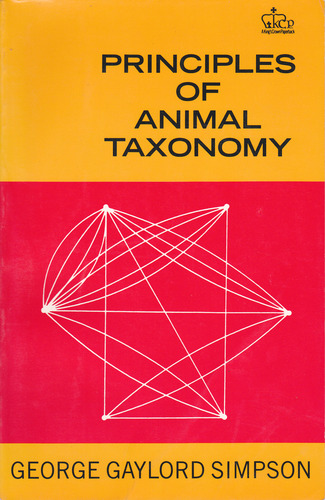Principles of animal taxonomy pdf free
Par arnone rebecca le mardi, octobre 4 2016, 23:09 - Lien permanent
Principles of animal taxonomy. George Gaylord Simpson

Principles.of.animal.taxonomy.pdf
ISBN: 023109650X,9780231096508 | 131 pages | 4 Mb

Principles of animal taxonomy George Gaylord Simpson
Publisher: Columbia University Press
The end result was a classification of existing 'data assets' into three main types of animals (although I would later argue the animals were really different zoos.) From this I During the UX design a fundamental principle was data integrity. More Than Just Making Up Names for Animals: Why Taxonomy Matters. Portrait of adult male Cercopithecus lomamiensis. Biological Classification of Organisms. Tree of Life representations became popular in scientific works, with known fossil groups incorporated. Homologues, natural kinds and the evolution of modularity. New York: Columbia University Press. Cuvier's The Animal Kingdom, Arranged According to its Organization, Serving as a Foundation for the Natural History of Animals, was an attempt to classify the animal kingdom on the basis of comparative anatomy, of which Cuvier's entire classification schema was Using these principles, Cuvier established a taxonomic approach based on comparative anatomy that established correlations between the inner systems that maintained life within an organism. The first section "Conservation Medicine" introduces fundamental principles in conservation biology, ecology and environmental health assessment as a foundation for understanding wild animals and their diseases in a wider framework. With Darwin's theory, a general acceptance that classification should reflect the Darwinian principle of common descent quickly appeared. That new glow-in-the-dark cockroach isn't only the scariest bug you've ever seen. While doing a presentation on the Principles of Taxonomy, I was asked the question of “How do you know when to choose a hierarchical taxonomy or a faceted taxonomy? The classic example is Linnaeus' animal kingdom taxonomy.